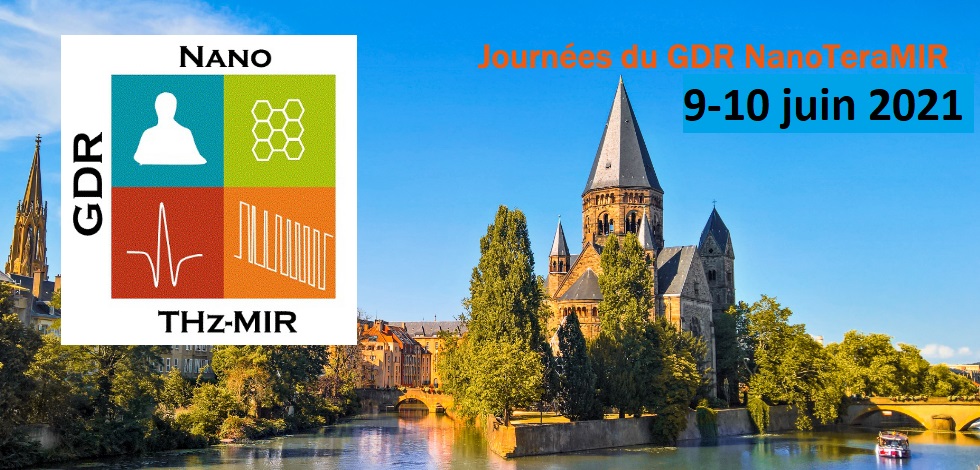Vibrational surface-enhanced spectroscopy is a promising application in the plasmonics field, where metallic nanoantennas (NA) are tailored to provide local electromagnetic field localization and enhancement for biomedical applications. [1] To cover a wide IR active range, from 1.1 to 6.5 µm, Al NA were picked as low-cost material with promising optical quality, CMOS compatible, and excellent properties for sensing. Figure A shows a metal-insulator-metal (MIM) with respective thicknesses of 100 nm of Al, 20 nm of SiO2, and 50 nm Al NAs.
Figure B shows the single unit cell of the NAs array formed of Al Bowties (BTs). To investigate the spectral response of these periodic Al-BTs, a numerical FDTD solver (Lumerical) was employed, where Maxwell's equations were discretized in both time and space. The Al-BT array was always polarized along y-axis to enhance the electrical field, as the gap strongly localizes the field. [2] For a wide-coverage purpose and to tune their localized surface plasmon resonance (LSPR) at different spectral positions, the side length (L) of each Al-triangle was swept from 0.3 to 2 µm with a step of 0.1 µm (Fig.C). The distance, d, between these triangles was maintained at 100 nm. For each L value, one main plasmonic resonance peak was detected which is usually referred to as a strong dipolar coupling. This first-order plasmonic resonance is always situated at the highest wavelength, then higher orders of resonance and other diffraction peaks appear representing the periodicity triggered along y-axis.
Al-BTs array were fabricated by electron-beam lithography followed by metallization and lift-off process; then were characterized under 36x IR Fourier Transform IR (FTIR) spectrometer. Figure D shows a good agreement between simulation (FDTD) and experimental (FTIR). The detected LSPR peaks appear at the exact simulated spectral position. Such a result is extremely encouraging for a lab-on-chip detection vision of functional groups and fingerprints of any bio-molecule in this propitious IR range using a single plasmonic platform.[3]
References:
[1] B. Cerjan et al. ACS Photonics 3, 354–360 (2016).
[2] B. Wang et al. Plasmonics 15, 609–621 (2020).
[3] F. B. Barho et al. Nanophotonics, 7, 507–516 (2017).



